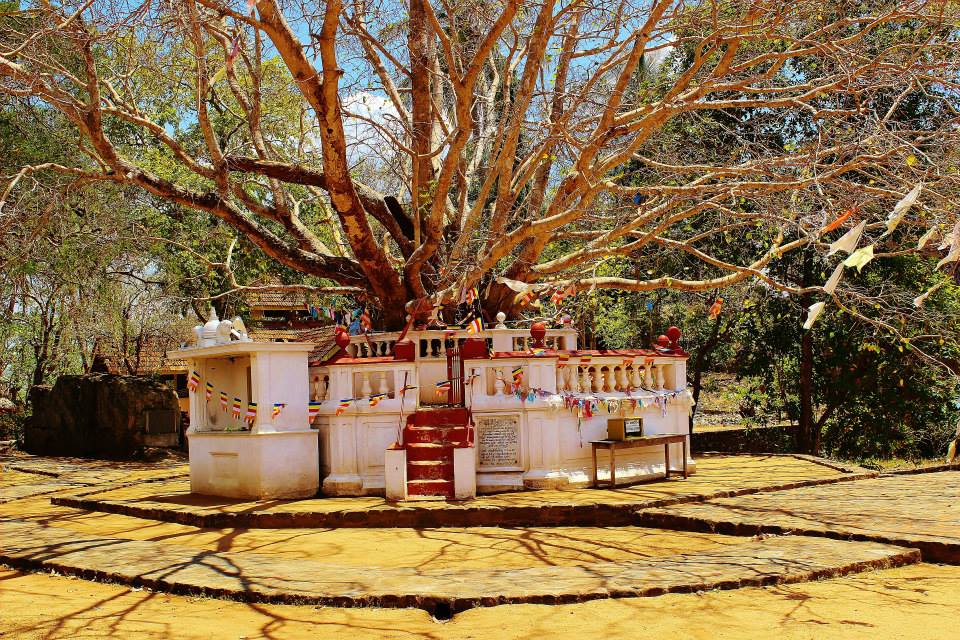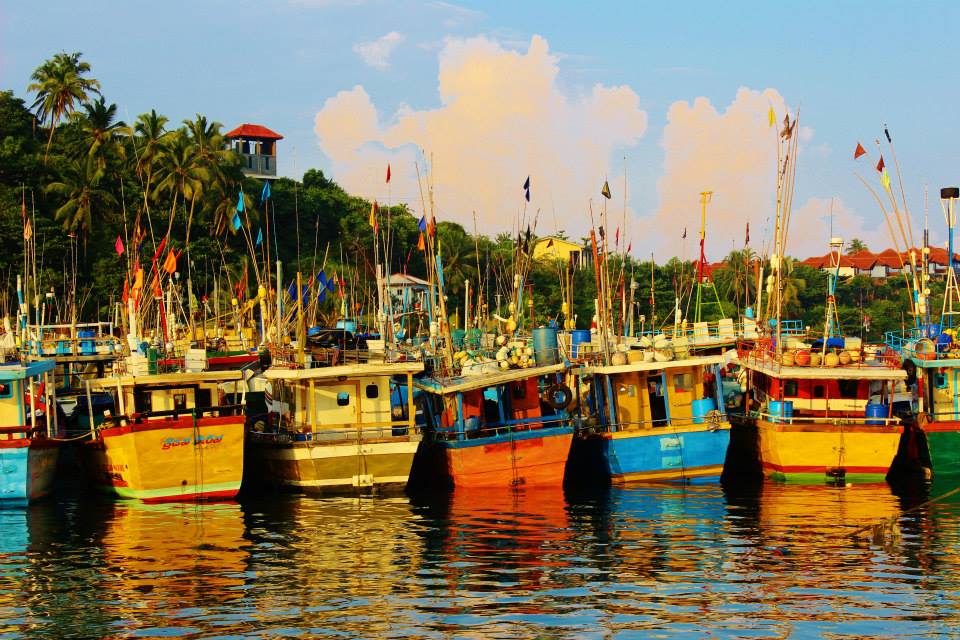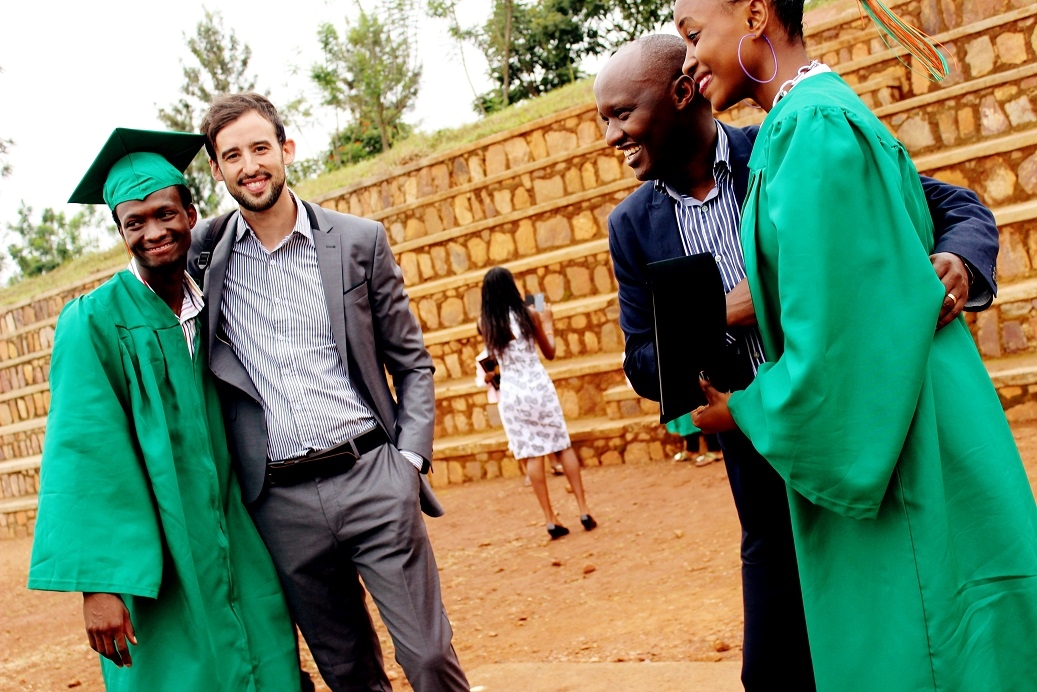A little over a year ago, I backpacked around the beautiful Asian island of Sri Lanka. Since journeying to the small country formerly known as Ceylon, I have been asked for travel advice on numerous occasions by friends and family who plan a future visit. For this reason, I felt it would be helpful to blog about my own experience with hopes that it will serve as a rough guide to travelling around Sri Lanka on a budget.
Day 1 – Arrival/ Negombo
As my plane was to arrive in Colombo in the early hours of the morning, I decided to look out for accommodation located within close proximity to the airport. After reading a number of articles on the web, it seemed pretty conclusive that the best option was to stay in the seaside town of Negombo (which is actually closer to Colombo airport than the capital itself). I booked for two nights in a quaint little guest house named Serendib – located about five minutes’ walking distance from Negombo’s vast white sand beach. Milinda, the guest house manager was incredibly helpful, assisting with booking a driver who would chauffeur me around the Cultural Triangle in the forthcoming days. I usually wouldn’t endorse a particular business on my blog, but I strongly recommend this guest house to anyone looking for somewhere to stay on their first night or two in Sri Lanka. The rooms were modest yet comfortable and each morning a delicious breakfast is freshly cooked and served to guests in the tranquil garden. It was overall excellent value for money and the perfect way to relax and enjoy my first few days in Sri Lanka. Negombo itself wasn’t the most interesting of places but does offer a wide variety of shops, bars and restaurants.
Days 2, 3 & 4 – The Cultural Triangle
Early on my second morning in Sri Lanka, I met Supun, the man who would be driving me through the Cultural Triangle which comprises an abundance of ancient cities, temples and ruins. Hiring a private driver may not exactly seem befitting of a budget traveller's guide, however, the low price of $150 for three days was a bargain considering the lack of public transport options between each attraction. To some, three days may seem like a bit of a squeeze to fit in all of the cultural triangle’s attractions, but it turned out to be just about the right amount of time to satisfy my personal objectives. It would also be worth mentioning that limited time meant I had to make a decision between visiting Anuradhapura and Polonnaruwa. I chose the latter due to the fact that the site is more condensed and, therefore, less time-consuming.
Supun was a friendly family man who really made my experience through the cultural triangle a pleasurable one. He had excellent knowledge of Sri Lanka’s ancient and modern history, and as a wildlife enthusiast, I was thrilled that he was able to point out a wide variety of animals during the journey. On route to Sigiriya, we first stopped off at the Avukana Buddha – a 42ft high Buddha statue that was carved from granite rock in the 5th century. Accompanying the impressive statue are a small stupa and a Bodhi tree decorated with prayer flags. The attraction was really interesting and made for some nice photos, but due to the lack of information on-site, it required no longer than one hour.
The Bodhi tree on the site of the Avukana Buddha
At around 3 pm on the same day, I arrived at the awe-inspiring UNESCO World Heritage Centre of Sigiriya. Referred by the locals as the 8th wonder of the world, Sigiriya is one of the most valuable historical monuments in Sri Lanka. Built by the parricidal King Kassapa I, the ruins of the ancient capital lie on the steep slopes and at the summit of the 180m high granite peak named the “Lions Rock“. The site boasts a series of ancient murals and graffiti to be marvelled at and those brave enough to the climb to the rock’s peak are rewarded with a breathtaking 360 ° panoramic view. After nearly three hours spent arduously climbing up and down the gargantuan rock in the hot April sun, I left Sigiriya and headed toward the chalet that I’d booked for the next two evenings.
I woke up early the next day and headed for Polonnaruwa – the second ancient capital after the destruction of Anuradhapura in 993. Also a UNESCO World Heritage Site, Polonnaruwa bears witness to several civilisations including the conquering Cholas, disciples of Brahminism, and that of the Sinhalese sovereigns during the 12th and 13th centuries. The immense capital was created in the 12th century by megalomaniac sovereign Parakramabahu I and is renowned for its unusual dimensions and the special relationship of its buildings with their natural surroundings. Highlights among the many intriguing attractions include the well-preserved Polonnaruwa Vatadage, the mysterious Lankathilaka Image House, and the gigantic 180ft high Rankoth Vehera (the 4th largest stupa in Sri Lanka). It was on this sweltering hot day that I felt pleased with myself for opting to pay a little more for an air-conditioned vehicle. Exploring Polonnaruwa’s ruins along with visiting its well-presented museum was well worth the $25 USD fee, but was also quite tiring and consumed most of the day.
The Vatadage in the ancient city of Polonnaruwa
The following day, I left Sigiriya for Kandy with a few stops planned along the way. Another early start enabled me to visit yet another UNESCO World Heritage Site – The Dambulla Rock Temple. It comprises five different caves that have each been converted into shrines – all lavishly decorated with various religious paintings and artefacts. Together with the fantastic views of Sri Lanka’s forest rich lands, this attraction was somewhat of a photographer’s paradise. I spent around two hours exploring the caves before setting off toward Kandy via Nalanda Gedige – an ancient Hindu temple situated in the very centre of Sri Lanka, and Aluvihāra Rock Cave Temple – a picturesque little site filled with more Buddha statues and rather disturbing murals of demons torturing the unrighteous.
Day 5 – Kandy
After saying goodbye to Supun the previous day, I woke up in a rundown little hostel named Green Woods that lay nestled on a hillside overlooking the Udawatta Kele Sanctuary forest. Breakfast was very basic but dining on the terrace whilst listening to the forest birds’ morning chorus was an agreeable experience. The main attractions in Kandy’s centre are the picturesque Lake and the Temple of the Sacred Tooth. The golden-roofed temple houses Sri Lanka’s most important Buddhist relic – a tooth of the Buddha – which lies heavily guarded in a gold casket shaped like a stupa. All visitors to the temple must cover their knees before entering but for those who wish to wear shorts, shrouds are available to rent from one of the vendors located around the perimeter of the complex. To be quite honest, I felt there were many more impressive temples in Sri Lanka besides the Temple of the Sacred Tooth and was a little underwhelmed during my visit to Kandy. I’m sure that the city has plenty to offer but it just wasn’t to my personal interests. Those who enjoy a spot of shopping may find Kandy a little more interesting than I did.
Days 6, 7 & 8 – Tea Country
A trip to Sri Lanka would not be complete without a train ride through its famous tea country. Making the decision between staying in Nuwara Eliya and Ella was a difficult one, but I opted for the latter as Ella had marginally better reviews. The ride from Kandy toward either of these destinations is quite lengthy, so for a more comfortable, less stressful experience, ensure you book your seats in first class or the observation car well in advance. I arrived at Kandy train station early in the morning hoping to secure a seat in either of the cars but quickly found myself disappointed to learn there were none available. I managed to get lucky, though, as a train that would later arrive at Peradeniya Junction – a small station located just outside of Kandy – had a few spare seats in first class. I paid a small fee to get to Peradeniya via tuk-tuk, and after a few hours spent snapping shots of the photogenic little train station, I hopped aboard the train for Ella. The six-hour journey was made easy thanks to the abundance of jaw-dropping views and the quaint little colonial stations. As I arrived in Ella I was met by Iran – the owner of Grand 39 Guest House – who transported me to my accommodation where I settled in for the evening.
The train that headed through Sri Lanka's beautiful tea country toward Ella
Early the next morning I set off to climb Ella Rock – the larger of two mountains that flank either side of the small town. Many choose to hire a guide before embarking on the two-hour (each way) hike, but I decided to make it a bit of a personal challenge by trusting my own instincts. The journey begins with a 1.5km walk along the railway track, which twists and turns through the hillside tea plantations. Shortly after leaving the tracks, a dirt track emerges leading climbers to the summit where they are rewarded for their efforts with phenomenal views of the surrounding landscape. I found this experience extremely enjoyable yet absolutely exhausting. If you plan to climb the peak then take plenty of water with you.
On my last full day in Ella, I climbed the smaller of the two mountains – Little Adam’s Peak. The mountain is named after its big brother, the holy Adam’s Peak due to its similar shape. This hike was far easier than Ella Rock yet offered equally impressive views.
Days 8, 9 & 10 – Tissamaharama/ Yala National Park
As public transport links between Ella and Tissamahrama are limited, and it also happened to be Sinhalese New Year, I travelled to my next destination via private taxi. It was relatively inexpensive and took around two hours from the guest house in Ella to the lakeside hotel in Tissamaharama.
The town of Tissamaharama didn’t have much going on, but I had ventured here for another reason – Yala National Park. Having spent months on safaris in Africa without seeing a single leopard, I felt my growing desire to spot the elusive cat would be satisfied in a park that boasts the highest concentration of leopards in the world. The hotel owners assisted me with booking a full-day safari with a personal friend of theirs, and I set off early the next morning in the hope of spotting one of mother nature’s most beautiful creations. I was not disappointed. Throughout the day I spent on safari, I spotted two leopards, a plethora of elephants and a variety of other mammals, birds and reptiles.
The next few days I spent exploring the relatively small town of Tissamaharama and relaxing by the lakeside. Other nearby parks that may interest travellers looking to squeeze a few more excursions in around this area include Udawalawe – boasting Sri Lanka’s largest population of elephants – and Bundala, which is famous for having a diverse range of bird species.
My first ever sighting of a wild Leopard. Yala National Park has the highest concentration of wild leopards in the world.
Days 11, 12 & 13- Mirissa
I arrived at the tropical beach town of Mirissa via an extremely overcrowded bus. I had journeyed here for two reasons. Firstly, because the area is a hotspot for Blue Whales, and secondly, to relax after the many days spent climbing all manner of ruins, temples and mountains. I booked a whale watching tour with an operator that was situated on Mirissa’s white sand beach and went to bed that evening full of excitement.
A tuk-tuk picked me up early in the morning and I headed for the harbour where a large boat half filled with fellow whale watchers was waiting for me. We set off after having a few snacks and spent around 3-4 hours without spotting anything but a few albatrosses and a single flying fish. Eventually, we did spot a Blue Whale which surfaced very close to our boat. It was one of the most awe-inspiring experiences of my life but it quickly became overshadowed by the boat crew’s serious lack of consideration for the creatures’ welfare. In fact, pretty much all of the boats weren’t too fussed about harassing the whales which I felt was highly unethical. I later discovered that there is one operator named Raja & the Whales which apparently have greater respect for the whales and also use the tour as a chance to educate guests about their conservation. I cannot entirely vouch for this as I did not experience a tour with Raja & the Whales, but if like me you want to experience the euphoria of witnessing one of Earth’s greatest creations without compromising their welfare, this operator is probably your best bet. You can find out more about my Blue Whale watching in my previous blog post, A Colossal Pursuit.
The following days were spent relaxing on the beach, exploring rock pools and swimming in what was a consistently rough sea. If you are lucky, you may spot one of a wide variety of turtles species that come to Mirissa beach to lay their eggs. There is also a small turtle rescue and rehabilitation area on the beach front which is sandwiched between a handful of bars and restaurants.
Mirissa Harbour before heading out to sea to watch Blue whales
Days 14 & 15 – Unawatuna
Unawatuna was not originally in my plans, but because it was a little closer to my final destination (Colombo), and I got an amazing deal to stay at the beautiful Dutch colonial Nooit Gedacht Heritage Hotel, I decided to take a bus westward toward the vibrant little seaside town. During my stay there, I moseyed about the small touristy area and also hiked through the Rumassala Sanctuaries Jungle toward the Jungle Beach. Though the hike was very enjoyable, the beach was disappointing as it was very heavily littered. Unawatuna didn’t have too much going on, but my hotel provided the peace and tranquillity I desired before heading off to Sri Lanka’s bustling capital city.
Days 16, 17 & 18 – Colombo
The last leg of my journey entailed exploring Sri Lanka’s largest city and capital – Colombo. I arrived there via train from Galle and walked from the station to the hostel where I would spend the next two nights. After reading numerous web-based reviews on Colombo, I didn’t have any great expectations of the city and therefore most of my time was spent sampling local food and visiting some of the small attractions such as Sri Kailawasanathan Swami Devasthanam Kovil – the oldest and largest Hindu temple in the city – and the Gangaramaya Buddhist temple. The Old Dutch Hospital was also worth a look around for those interested in picking up last minute souvenirs before their departure. Perhaps there is more to Colombo than first meets the eye, but in the short time I spent there, I didn’t find too many things to occupy my time. In hindsight, I probably would have spent one less day here which could have been used to explore Anuradhapura earlier in my trip.






